What Calgary Homeowners Should Know Before Choosing
After several years of rate volatility, mortgage rates in Canada are finally finding balance. As interest rates stabilize, many Calgary buyers and homeowners up for mortgage renewal are asking the same question: Is it better to lock in or stay flexible?
With economists offering mixed signals about what’s next for interest rates and Calgary’s housing market trending toward more balanced conditions, one thing is clear — there’s no single right answer for everyone.
The best mortgage choice for you depends on a combination of intersecting factors, including your personal financial situation, risk appetite, and long-term goals, making it as much a strategic decision as a financial one.
Read on to learn more about current rates, market conditions, and the pros and cons of rate options depending on your unique scenario.
Rates Are Levelling — But So Are the Differences
As of late 2025, the Bank of Canada’s overnight rate sits at 2.50%, following several small but significant cuts — its lowest point since 2022. In Calgary, five-year fixed mortgage rates now average 4.09% to 4.44%, depending on your lender and credit profile, while five-year variable rates are hovering just below fixed rates, at around 3.95% to 4.20%.This near parity is unusual. Typically, fixed rates carry a premium to reflect future uncertainty, while variable rates are priced lower to entice borrowers willing to take on economic and market risks.
Why are Fixed and Variable Rates So Close?
While the shrinking gap between fixed and variable interest rates can be attributed to several different factors, much of it comes down to stability. In shifting from aggressive tightening to signalling potential cuts, the Bank of Canada has reduced the need for lenders to price in large cushions to accommodate their risk. In other words, when the central bank policy rate holds steady, both fixed and variable products tend to meet in the middle.Bond markets also play a key role in where mortgage rates land. As fixed rates are tied to government bond yields, the recent dip in yields, fueled by concerns over slower economic growth and easing inflation, has helped bring fixed mortgage rates down.
Meanwhile, variable rates, which move with the Bank of Canada’s prime rate, have held steady due to the central bank being cautious about making deeper cuts, further narrowing the gap between fixed and variable rates.
Fixed-Rate Mortgages: The Case for Predictability
For many homeowners, choosing a fixed-rate mortgage isn’t about finding the absolute lowest rate; it’s about peace of mind. Fixed rates offer predictability, ensuring your payments stay the same for the entire term. That simplifies long-term budgeting and eliminates the stress of wondering what might happen if rates shift again.
This approach is especially appealing for households with limited financial flexibility, those on fixed incomes, or families planning to stay in their homes for several years. Even if rates dip slightly, paying a bit more for stability can feel worthwhile, serving as a kind of insurance against the unexpected.
Fixed rates also offer protection if forecasts turn out to be wrong. Should inflation resurface or global pressures force the Bank of Canada to raise rates again, borrowers locked into fixed terms would be shielded from sudden payment increases. After the rapid hikes of 2022 and 2023, that kind of security feels more valuable than ever.
Pros:
- You know precisely what you’ll pay each month.
- Protects you from unexpected rate hikes.
- Peace of mind — especially if you’re planning to stay in your home long term.
- Often higher than variable rates.
- Breaking the mortgage early can carry significant penalties.
- Locked into your rate until the term ends, even if rates drop.
Could Fixed Rates Become Cheaper?
Yes, it’s always possible that fixed rates could drop.If bond yields were to fall due to economic data or global uncertainty driving investors toward safer assets like government bonds, fixed mortgage rates could drop a little further. A downward shift in yield would give lenders more room to lower fixed rates in a meaningful way.
That said, most forecasts still suggest variable mortgages will keep a slight edge through late 2025 and into 2026. However, the gap between the two will likely stay narrow, and the days of variable rates offering a full percentage-point advantage over fixed rates are probably behind us for the foreseeable future.
Variable-Rate Mortgages: The Case for Flexibility
A variable-rate mortgage moves with the Bank of Canada’s policy rate, meaning your payments can fluctuate. Variable mortgages come in two main types:- Adjustable-rate (ARM): Your payment changes as rates move. When rates drop, your payment decreases; when they rise, your payment increases.
- Fixed-payment variable: Your payment stays the same, but the balance between principal and interest shifts. When rates drop, you pay down your mortgage faster; when they rise, progress slows — and if rates climb too high, you may hit a trigger point requiring a higher payment or conversion to fixed.
Plus, beyond rate movements, variables also come with a few structural advantages. The penalties for breaking them are typically much lower than with fixed mortgages — an essential consideration if you plan to move, refinance, or make larger prepayments before your term is up. Most variable products also allow borrowers to convert to a fixed rate mid-term without penalty, providing the flexibility to adapt if conditions change.
Pros:
- Potential to benefit if rates decline.
- Easier to pay down or refinance early.
- Good fit for short- to mid-term ownership plans.
- Can lock into a fixed rate for the remainder of the term if the fixed rate is lower
- The payout penalty is usually lower if you discharge the mortgage (i.e., sell the property).
- Rising payments if rates increase.
- Greater exposure to market volatility.
History Favours the Bold
Looking back historically offers a valuable perspective on variable-rate mortgages. Interestingly, between the 1950s and 2000, Canadian homeowners who chose variable mortgages came out ahead about 90% of the time.After the 2008 financial crisis, when central banks slashed rates to stimulate growth, variable borrowers again saw meaningful savings. And during the pandemic, variable rates dropped to record lows (in some cases as little as 0.88%) while fixed rates stayed higher due to uncertainty in the bond market.
But history also reminds us of the risks. In 2022 and 2023, variable-rate borrowers felt the sting of the fastest rate hikes in decades. Monthly payments jumped by hundreds of dollars, quickly erasing the advantage variables had offered. That experience remains fresh for many homeowners, making risk tolerance a far more critical part of the mortgage decision than it used to be.
In Summary
As Calgary’s market finds its balance and interest rates begin to steady, the decision between a fixed or variable mortgage isn’t about finding the one “right” answer; it’s about finding the right fit for you.Choosing a mortgage today requires more than comparing numbers. It means looking honestly at your financial situation, lifestyle, and comfort level with risk. Fixed rates can bring calm and predictability for households that value security, while historically, variable rates have rewarded those with flexibility and a higher tolerance for risk.
What matters most is understanding how each option aligns with your personal goals. Whether you prioritize steady cash flow or the possibility of long-term savings, your mortgage choice should fit your overall financial rhythm — not the other way around.
At the Trung Bien Real Estate Team, we believe good real estate decisions come from a clear strategy, not guesswork.
Thinking about your next move?
Our team can help you evaluate your options, connect with trusted mortgage professionals, and build a plan that’s right for your home, your budget, and your peace of mind.

